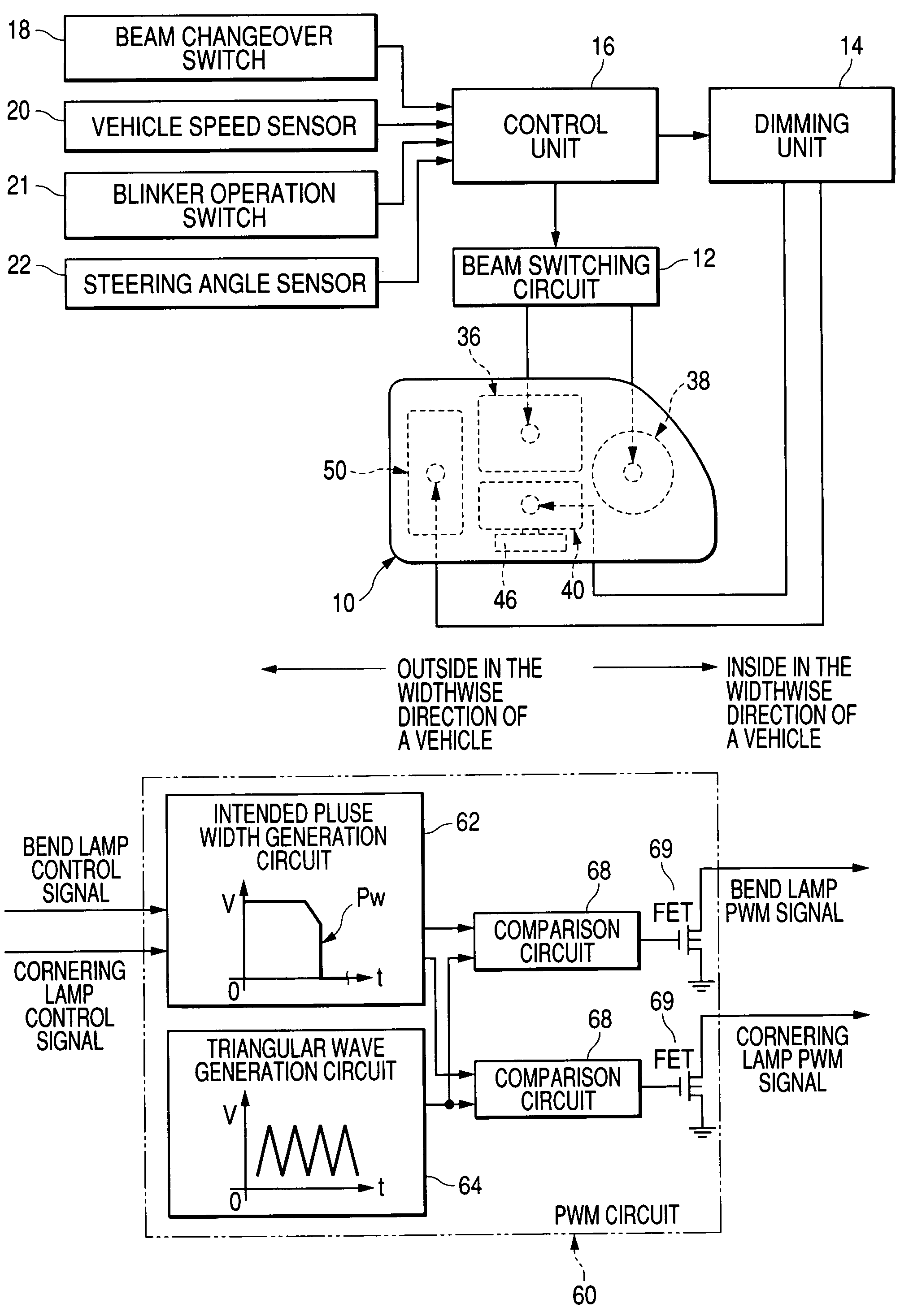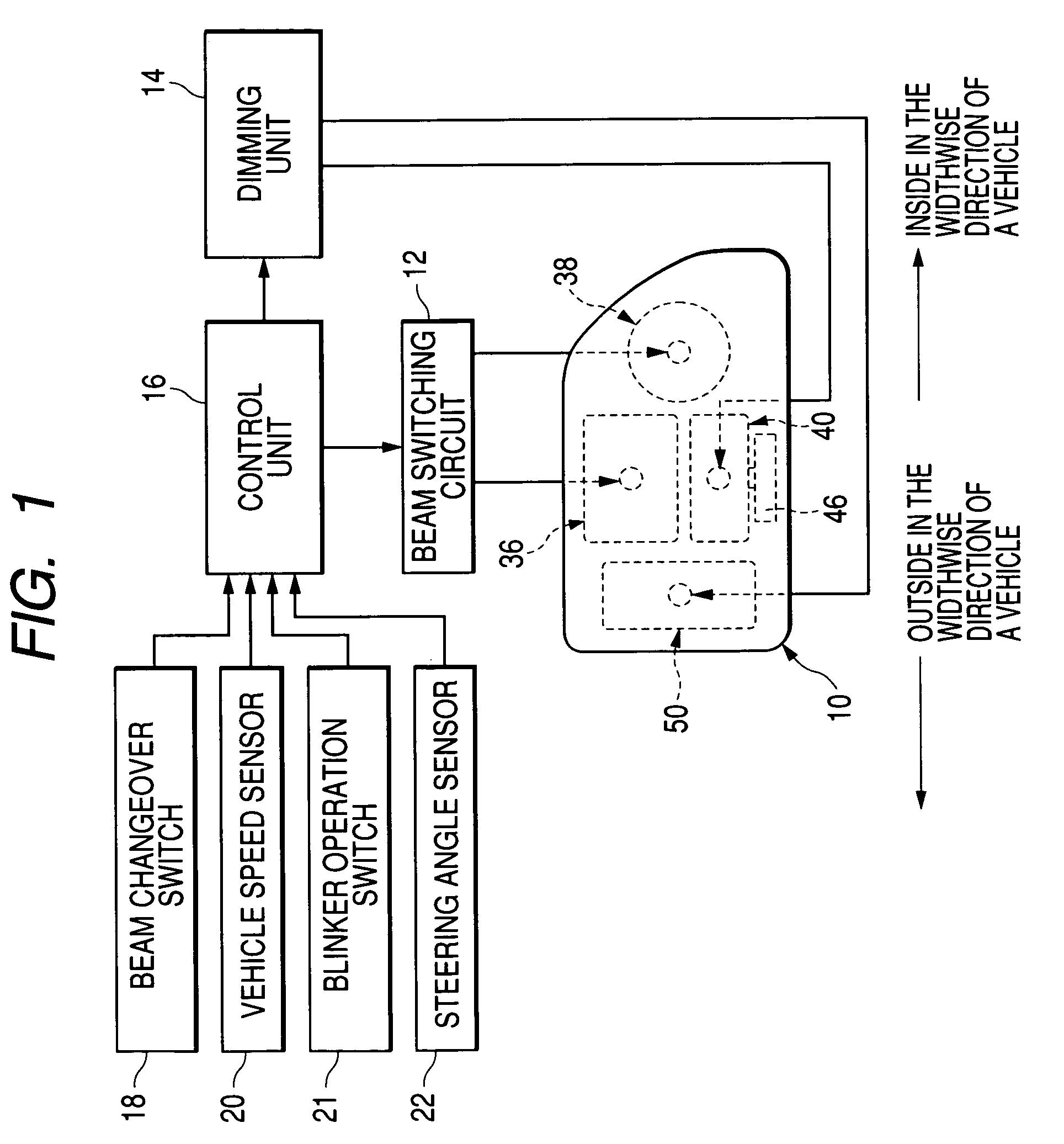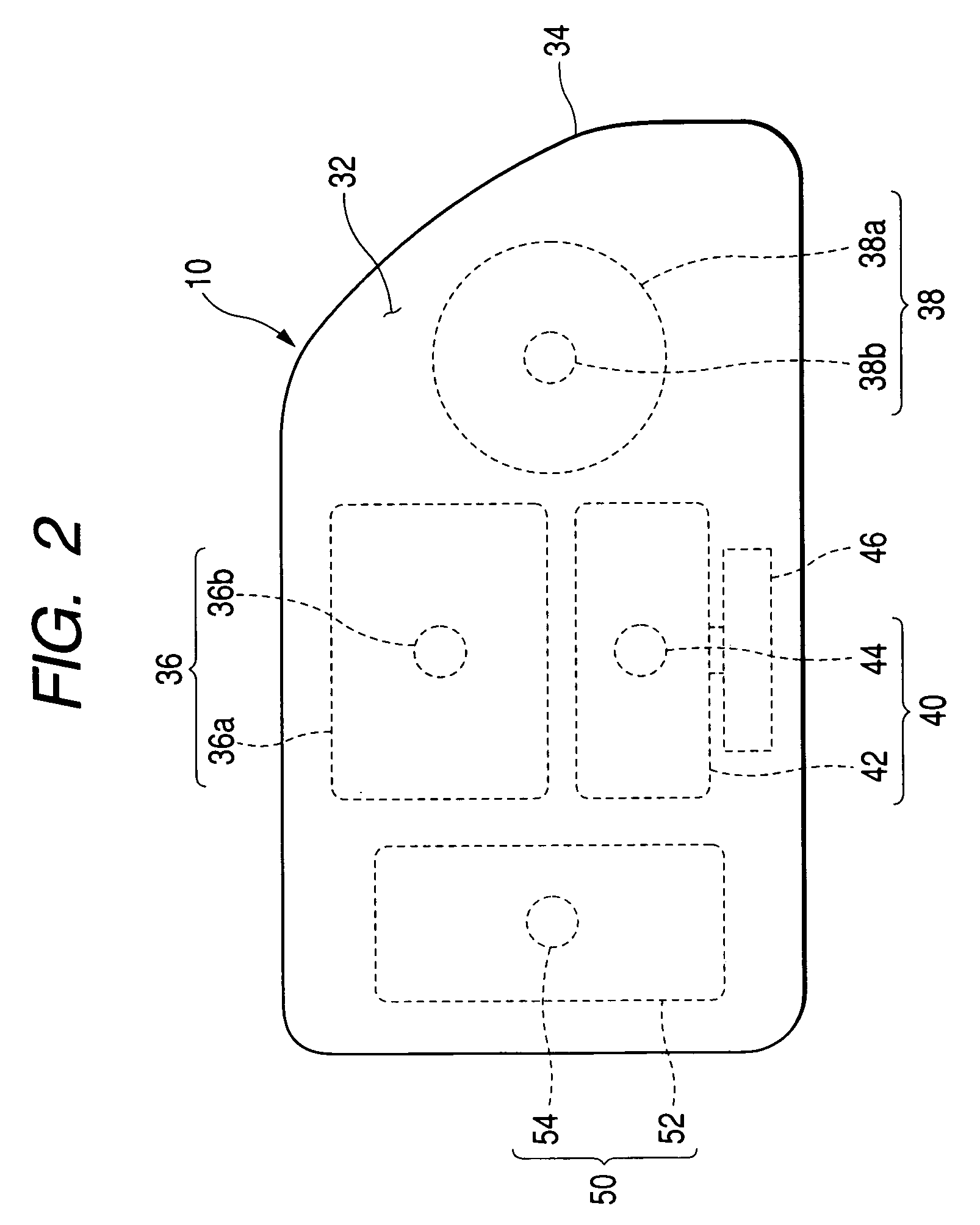Vehicle headlamp system and dimming-type vehicle headlamp
a headlamp system and vehicle technology, applied in the direction of lighting and heating equipment, transportation and packaging, lighting support devices, etc., can solve the problems of driver uncertainty, driver uncertainty, driver uncertainty, etc., and achieve the effect of reducing uncertainty and degree of uncertainty
- Summary
- Abstract
- Description
- Claims
- Application Information
AI Technical Summary
Benefits of technology
Problems solved by technology
Method used
Image
Examples
first embodiment
[0103]In addition to having the configuration of the first embodiment, the headlamp system is configured such that a light quantity sensor (environment illumination detection sensor) 23 is mounted on the upper surface of the dash board facing the windshield. In accordance with a signal output from the light quantity sensor 23, the valve 36b of the sub-beam formation lamp unit 36 of the headlamp is automatically illuminated or extinguished. The headlamp system is also configured so as to illuminate or extinguish the lamp units 40, 50A through use of a signal output from the light quantity sensor 23.
[0104]Specifically, the control unit 16 is configured to receive an output from the light quantity sensor 23. When the output from the light quantity sensor 23 is higher than a value (i.e., when the environment illumination is higher than the value), the environment is sufficiently bright. When the headlamp sub-beam formation lamp unit 36 is being illuminated, the lamp unit is extinguished...
second embodiment
[0106]As shown in FIG. 6, in the first exemplary, non-limiting embodiment, the light source applied voltage control pattern Pw achieved at the time of extinction is configured such that the light source applied voltage decreases linearly from the rated voltage Va to the “threshold value” Vc. As shown in FIG. 8, in the exemplary, non-limiting second embodiment, the light source applied voltage is configured to decrease to trace the locus of an upwardly-convex-shaped continuous hyperbola from the rated voltage Va to the “threshold value” Vc over a period of one second. Uncertainty which would arise after the “threshold value” has reached 0 volts is reduced.
[0107]In other respects, the second exemplary, non-limiting embodiment is identical with the first embodiment, and hence repeated explanations thereof are omitted, and like reference numerals are assigned to like features.
[0108]In the first and second embodiments, dimming control is performed such that the quantity of light is dimin...
PUM
 Login to View More
Login to View More Abstract
Description
Claims
Application Information
 Login to View More
Login to View More - R&D
- Intellectual Property
- Life Sciences
- Materials
- Tech Scout
- Unparalleled Data Quality
- Higher Quality Content
- 60% Fewer Hallucinations
Browse by: Latest US Patents, China's latest patents, Technical Efficacy Thesaurus, Application Domain, Technology Topic, Popular Technical Reports.
© 2025 PatSnap. All rights reserved.Legal|Privacy policy|Modern Slavery Act Transparency Statement|Sitemap|About US| Contact US: help@patsnap.com



